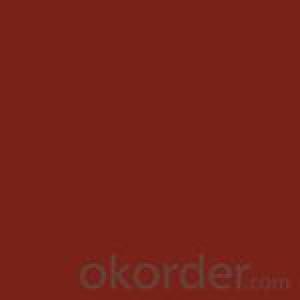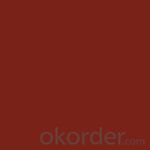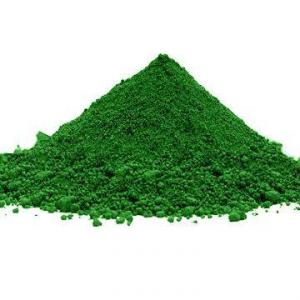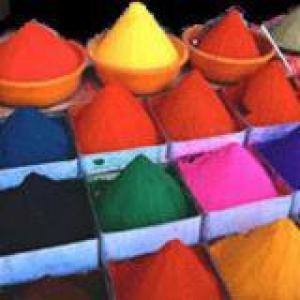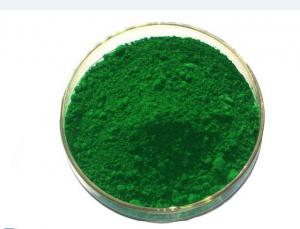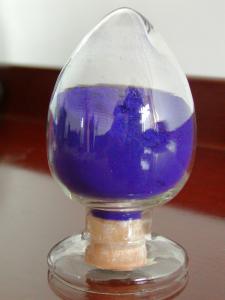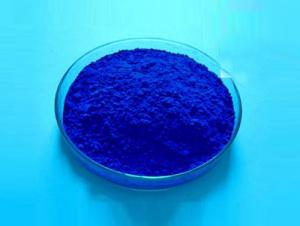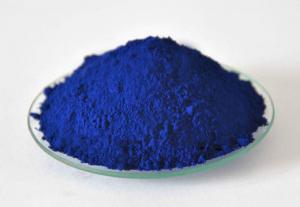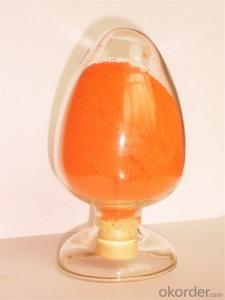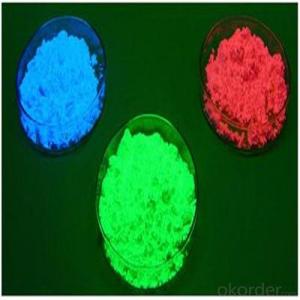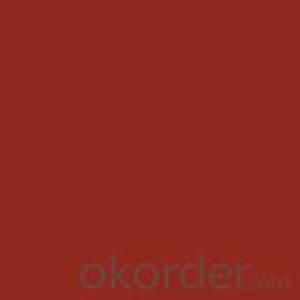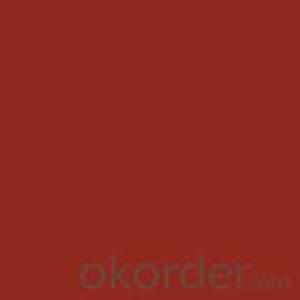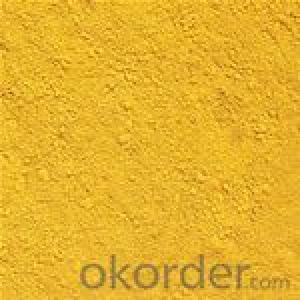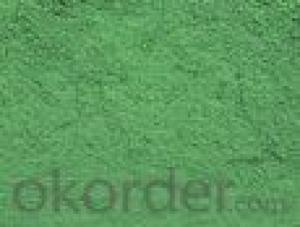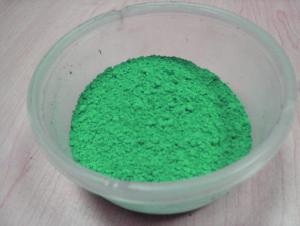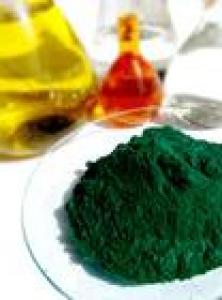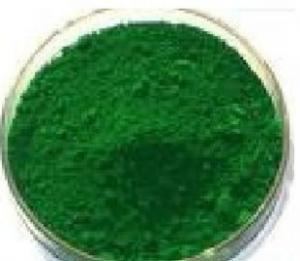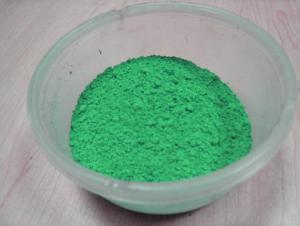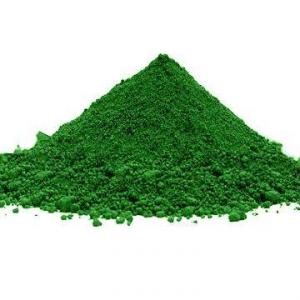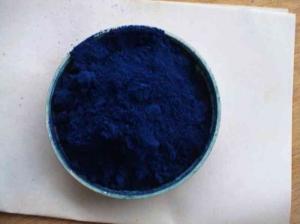Iron oxide red 180
- Loading Port:
- China Main Port
- Payment Terms:
- TT OR LC
- Min Order Qty:
- -
- Supply Capability:
- -
OKorder Service Pledge
OKorder Financial Service
You Might Also Like
Quick Details
· CAS No.: 1309-37-1
· Other Names: Iron oxide (Fe2O3)
· MF: Fe2O3
· EINECS No.: 215-168-2
· Place of Origin: China (Mainland)
· Usage: Ceramic Pigments, Coating Pigment, Cosmetic Pigment, Ink Pigments, Plastic & Rubber Pigment, Leather Pigments, Other
· Model Number: 180
· Type: Iron Oxide
· Style: Inorganic Pigment
· Appearance: Powder
· color: Iron Oxide Red, Yellow, Black, Blue ,green
· wetherability: very good
· certificate: ISO9001:2000
· heat-resistant: very good
Packaging & Delivery
Packaging Details: | 25 kg/ craft paper bag, 22MT/20FCL (Iron Oxide Red); 25 kg/ craft paper bag, 13 MT/ 20FCL (Iron Oxide Yellow); 25 kg/ craft paper bag, 20MT/ 20FCL (Iron Oxide Black) |
Delivery Detail: | Within 2weeks after get the advanced money |
Specifications
synthetic red iron oxide 180
21 years factory
supply CCIC,ISO,SGS inspect
Free samples will sent to the customer
Iron oxide red 180
1. Product Description
1). Bright-colored exquisite powder.
2). Good weatherability (Lightfastness, heat-resistant and alkali resistant)
3). Strong tinting power, excellent coverage and fine dispersion.
4). We can supply iron oxide with different color, specifications and packing
5). Only dissolved in heat strong acid
2. Product detailed Specification
Item | Index |
Primary color |
|
Tint of pigment |
|
Iron content (Fe2O3)drying at 105℃%≥ | 80 |
Fineness(325mesh wet sieving residue) %≤ | 0.3 |
Oil absorption g/100g | 14-20 |
Water and 105℃ volatile matter% | 1.0 |
Water soluble matter%≤ | 1.5 |
PH value of aqueous suspension | 5-7 |
Relative tinting strength(standard sample ratio %)≥ | 95 |
PH of water extract ml≤ | 20 |
We also have many of other colors and type, if you have the special request, please email me freely
3. Product Application
brick,concrete, roofing tile, paver, stucco, masonary, paint, coating, rubber, plastic, paper and leather industries etc.
4. Product Packing:
25 kg/ craft paper bag, 22MT/20FCL (Iron Oxide Red);
25 kg/ craft paper bag, 13 MT/ 20’FCL (Iron Oxide Yellow);
25 kg/ craft paper bag, 20MT/ 20’FCL (Iron Oxide Black)
5.superiority
1.accept the inspection of SGS, CCIC and the other international inspection department.
2.Free samples will sent to you.
3.21 years experience.
4.professional skills
- Q: do all leaves extract contain the same pigments??why?
- Absolutely not. Leaf pigments, just to name a few, may include chlorophyll, carotenes, lutein, anthocyanins. Not only will pigment content vary between plant species, but pigment content will vary in individual plants seasonally.
- Q: list 5 mineral pigments and 5 animals pigments and how its produced
- Mineral Pigments: Lazurite (Lapis Lazuli), Vivianite (Blue Ochre), Riebeckite, Glauconite, Malachite, Jarosite, Limonite, Hematite, Goethite, Celadonite and Shungite Animal Pigments: Tyrian Purple, made from the mucus of a Murex snail Carmine, made from an insect in central and south America, called Cochinilla Natural indigo, made from plants of the genera Indigofera Rose madder, a pigment derived from the plant Rubia tinctorum Gamboge, I think is a dark type of mustard (seeds) Alizarin occurs in the root of the common madder (Rubia tinctorum) and in various parts of Indian madder (Rubia cordifolia). And regarding how they are produced, well each one has it?s own methods. You may want to search each of those names and you can find information for each one. Hope this helps, Bella
- Q: can the pigment know as Chinese purple form a matter wave in certain circumstances?
- Peaceful demonstrations, which are the sorts urge by governments, are just a way of letting the public let off steam safely without achieving anything. It is most convenient for them - every one has a jolly time, a bit of bantering, and we all go back to the status quo. Just like the House, a lot of empty debates, and the government just goes ahead and does what it wants. The public is beginning to become aware of the severe limitations of democracy as it is practised in the west. There are times, as the government claims, it has to do what has to be done, even though the actions may be 'unpopular', meaning they are not supported by the majority, and therefore undemocratic. Thus, we have supposedly democratic governments doing undemocratic things (and we accuse other countries with different systems of being undemocratic!). In such situations where democratic governments are acting undemocratically, the public surely has a right to resort to actions other than the ballot box (denied them anyway), or futile gestures. The government is supposed to represent majority will in our system; where it ceases to do so, it has lost its mandate, and, should arguable be replaced before the election comes round.
- Q: I am about to purchase a bunch of MAC pigments and I have noticed that they all look glittery, is this just the kind that i am looking at? I know they are versatile, so that is why i want to buy them. And it seems as though they will last longert than eyeshadow...
- Of course they can ! I love mac pigments. Yes, fallout is involved..but what i do is i use my mixing medium with them so that they go on wet and no fallout. If you don't have mixing medium you can mix them with eyedrops. What i do is i put a drop in the lid and pick up some pigment and mix it till i get the perfect consistancy. You can also learn how to press them, so that they can become pressed eyeshadows instead of loose. But if you just want to use them loose, make sure you get a good flat shader brush...make sure you pat the pigment on your lids insted of in a swiping motion, this also prevents less fall out. Get some loose transparent powder as well set that under your eyes, and swipe it off when done..this makes the fallout swipe away without smearing on your face.. Hope that helps ! If you want you can do all of this, but you don't have to...just random tips to prevent that annoying fallout
- Q: can pigment ink be used to tattoo?
- Pigment ink? Tattoo ink is pigment ink. Printer ink is pigment ink. Crayola markers are pigment ink. It all comes down to what it's manufactured for and whom is doing the manufacturing. Reputable shops use certain brands of tattoo ink for a reason. Using something not made for the human body at all makes for an ugly tattoo and can cause infections or other problems seeing as nothing in it's manufacturing process is sanitary or compatible with use in skin.
- Q: what are the differences between colorfast and non colorfast pigments?
- Pigments, are generally solids and are usually insoluble in the medium in which the pigment is being used. Pigments, are typically used instead of dyes in applications where color migration or bleeding is undesirable. One possible approach to create a colorfast pigment for use in something like toothpaste would be in a layered anion exchange material which is contacted with the dye under conditions in which a water-insoluble pigment is obtained. The water soluble dye and the layered anion exchange material would normally be contacted together in a liquid medium in which the dye has been dissolved. The layered anion exchange material is preferably a layered aluminate of some kind. Generally, pigments are graded by international standards for color fastness. Eight is the most color fast, and anything over six will do quite well out-of-doors. As ancient Frescoes, sand paintings, petroglyphs and other pure-pigment art demonstrate, certain pigments can remain in direct sunlight for thousands of years without any indication of fading. These pigments are earth, metal, and chemical colors that are neither dyes nor tints. Dyes and tints, such as alizarin crimson, berry juice, etc. will bleach quickly due to ultraviolet exposure that occurs in direct or indirect sunlight. Today most paints are derived from much different sources than they were as recently as fifty years ago. Real cadmium, cobalt, copper oxide, to name a few, are no longer used. They are now formulated to appear similar to the traditional pigments. They may be extended out with white, resulting in an appearance that can differ with traditional counterparts. For the most part these new colors are very colorfast and without the addition of medium or varnish they will not fade when left in direct sunlight.
- Q: How do you use pigments?
- The question is Why do you use pigments? I promise you they will not bring any amount of joy or happiness to your life, and they are probably a waste of money.
- Q: Can someone describe the role of accessory pigments in photosynthesis?
- Accessory pigments help the plant absorb energy from different wavelengths of light other than those that are absorbed by the main pigment chlorophyl.
- Q: explain how the pigments in colored objects such as clothes differ from plant pigments
- Green pigments absorb light in the red and blue parts of the spectrum and reflect the green back to our eyes. The major functional difference between chlorophyll and say jade green is that only the chlorophyll in living systems can transfer the absorbed light energy and the excited electron to another molecule, thus trapping it. In biology, pigment is any material resulting in color in plant or animal cells which is the result of selective absorption. Some biological material has so-called structural color, which is the result of selective reflection or iridescence, usually done with multilayer structures. Unlike structural color, pigment color is the same for all viewing angles. Nearly all types of cells, such as skin, eyes, fur and hair contain pigment. Butterfly wings typically contain structural color, although many of them contain pigment as well. Creatures that have deficient pigmentation are called albinos. In the coloring of paint, ink, plastic, fabric and other material, a pigment is a dry colorant, usually an insoluble powder. There are both natural and synthetic pigments, both organic and inorganic ones. Pigments work by selectively absorbing some parts of the visible spectrum (see light) whilst reflecting others. A distinction is usually made between a pigment, which is insoluble, and a dye, which is either a liquid, or is soluble. There is no well-defined dividing line between pigments and dyes, however, and some coloring agents are used as both pigments and dyes. In some cases, a pigment will be made by precipitating a soluble dye with a metallic salt. The resulting pigment is called a lake.
- Q: a. chlorophyll ab. chlorophyll bc. chlorophyll cd. carotenoid pigments
- Chlorophylls are greenish pigments which contain a porphyrin ring. This is a stable ring-shaped molecule around which electrons are free to migrate. Because the electrons move freely, the ring has the potential to gain or lose electrons easily, and thus the potential to provide energized electrons to other molecules. This is the fundamental process by which chlorophyll captures the energy of sunlight. There are several kinds of chlorophyll, the most important being chlorophyll a. This is the molecule which makes photosynthesis possible, by passing its energized electrons on to molecules which will manufacture sugars. All plants, algae, and cyanobacteria which photosynthesize contain chlorophyll a. A second kind of chlorophyll is chlorophyll b, which occurs only in green algae and in the plants. A third form of chlorophyll which is common is (not surprisingly) called chlorophyll c, and is found only in the photosynthetic members of the Chromista as well as the dinoflagellates. The differences between the chlorophylls of these major groups was one of the first clues that they were not as closely related as previously thought. Carotenoids are usually red, orange, or yellow pigments, and include the familiar compound carotene, which gives carrots their color. These compounds are composed of two small six-carbon rings connected by a chain of carbon atoms. As a result, they do not dissolve in water, and must be attached to membranes within the cell. Carotenoids cannot transfer sunlight energy directly to the photosynthetic pathway, but must pass their absorbed energy to chlorophyll. For this reason, they are called accessory pigments. One very visible accessory pigment is fucoxanthin the brown pigment which colors kelps and other brown algae as well as the diatoms. From this I would say the answer is c.
Send your message to us
Iron oxide red 180
- Loading Port:
- China Main Port
- Payment Terms:
- TT OR LC
- Min Order Qty:
- -
- Supply Capability:
- -
OKorder Service Pledge
OKorder Financial Service
Similar products
Hot products
Hot Searches
Related keywords
